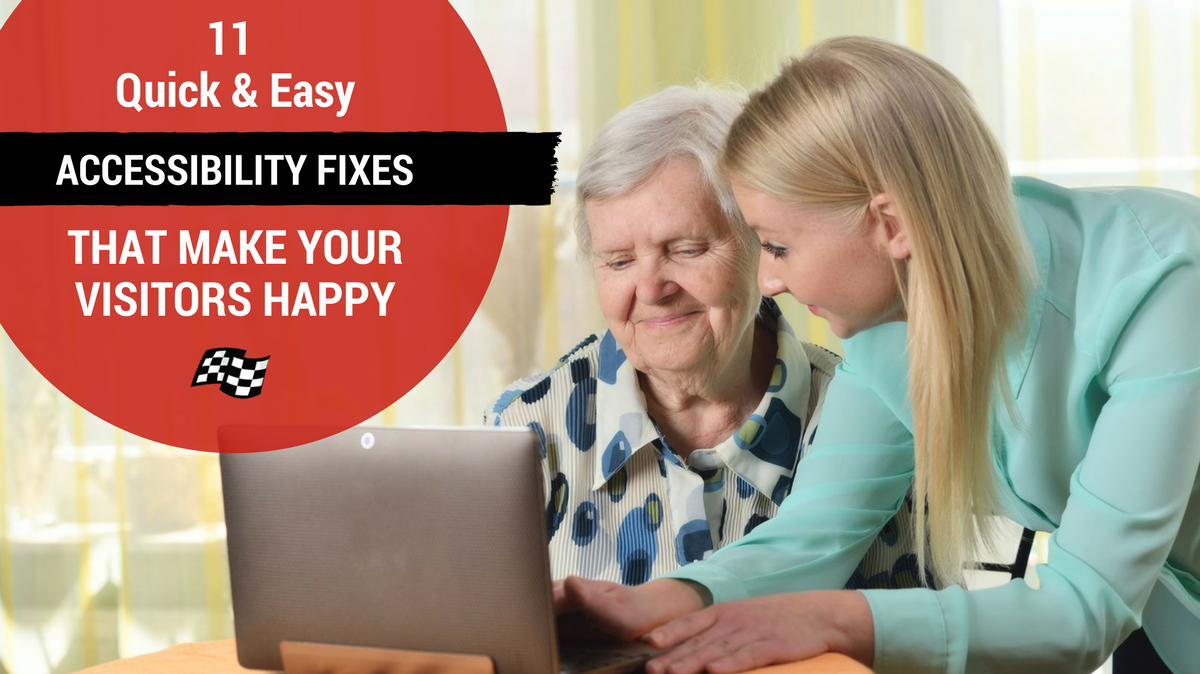
 This is part of the Total Usability Series that was originally published in 2007. A decade later, usability is more important than ever, so we are revisiting this series and updating all of the articles. This post was updated 12/28/2017.
This is part of the Total Usability Series that was originally published in 2007. A decade later, usability is more important than ever, so we are revisiting this series and updating all of the articles. This post was updated 12/28/2017.
As more and more users gain access to the web, it becomes increasingly important to ensure that your website is accessible to all, not just a few. Just as businesses must comply with the American Disabilities Act to ensure proper access to customers with disabilities, businesses should do all they can to make their websites accessible to all users regardless of the means in which they access the site.
And of course, not all website accessibility issues involve meeting the needs of the disabled. What must be considered is the growing number of users that now access website on mobile phones, tablets, etc., or with images turned off. These users can still be your target audience, and ensuring your site can be used through alternate avenues is essential to capturing that audience.
11 Essential Accessibility Factors
With that in mind, let’s look at some of the key ways to make your site more accessible.
- Doctype declaration. The doctype allows you to declare what version of HTML your site uses. This is helpful to the browser rendering the site so it knows how best to interpret the information presented. Each page of your site should specify doctype and language encoding. If you are unfamiliar with the doctype declaration, you can read about it at W3.org.
- Validate your code. You must make sure your code aligns with the Web Content Accessilbity Guidelines (WCAG) 2.0. There are a number of tools available to help you evaluate your code.
- Page defaults. Use your Cascading Style Sheets (CSS) to set all the default colors, font sizes, and text alignment of the site. Different browsers use their own defaults for any of these, and failure to set them to your preference may cause your site to look quite different than intended in different browsers.
- Readable fonts. The text on your website should be large enough to be read by most users, in a font that is easy to read online, and with enough space between lines and paragraphs to make it readable. Beyond that, your site should use relative, rather than absolute, font sizing. Relative sizing allows visitors to resize the font to their preference. You lose some control over how the page appears, but it is better to lose a little control than to lose the visitor altogether because the font is too difficult to read.
- Multiple methods of differentiation. Some sites only use color to differentiate different items. Obviously, this is a problem for people who are color blind. Use other attributes, such as contrast, size, position, etc., to help visitors tell the difference between different elements.
- Alternate image text. All visual images on a page (not those used for page formatting) should contain alternate text describing the image. This ensures that the image is properly described for text readers and those surfing with images turned off.
- CSS-less browsing. Many devices don’t use CSS when rendering a web page. Make sure that your site can be viewed and browsed satisfactorily when CSS is turned off.
- Mobile friendly. Mobile friendliness is essential in today’s environment. Make sure that all content can be read easily, forms can be filled out, links and buttons are large enough and positioned to easily be tapped by fingers, etc.
- Allow for keyboard navigation. Many users prefer to use their keyboard rather than the mouse to navigate through webpages. Moreover, many disabled users are unable to use a mouse and rely on keyboard methods to navigate through a site. Make sure your website allows keyboard control.
- Allow users to skip navigation. For those using screen readers, it can be frustrating to have to listen to the navigation being read before they can get the content they came for. Code your site to allow the option to skip over navigation.
- Transcripts. Provide transcripts for any video and audio content on your website. Not only will this help visitors who can’t hear, some people prefer to read content rather than listen to or watch it because they can do it at their own speed. It also provides more content for search engines to understand what the page is about.
These are just a few quick accessibility issues that should be adhered to. Designing your site with accessibility in mind assures that your content can be consumed regardless of browser, device, or physical limitations. By doing this you’ll capture more of your target audience.
